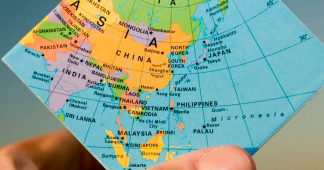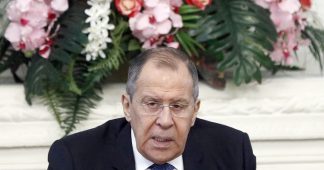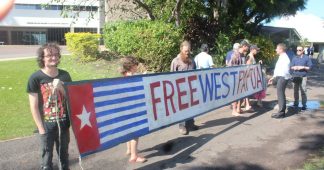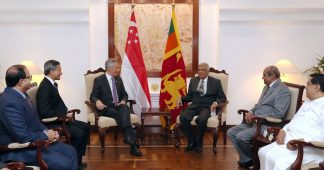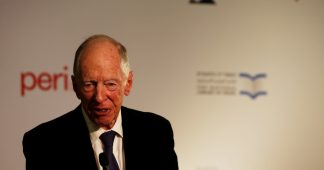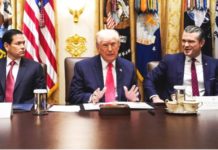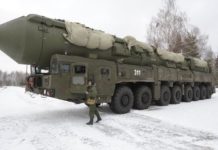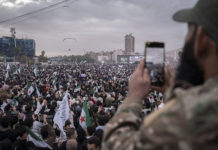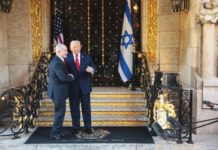(Read Part I)
G7 and E7, OLDEFOS and NEFOS
Those forecasts reveal interesting points, at least two for the purpose of this essay:
1) The grouping of the global economic powers into two: G7 (US, UK, France, Germany, Japan, Canada and Italy) and E7 (China, India, Indonesia, Brazil, Russia, Mexico and Turkey). “G” for “Government” and “E” for “Emerging”. This indicates the primacy of bipolarity in global affairs despite the spreading discourses of multipolarity in world order following the end of the Cold War.
2) The term “Emerging”. It reminds me to the global geopolitical context formulated in the 1960s. It was Soekarno, the president of Indonesia, who proposed at the first time the word “emerging” in global geopolitics. According to him, the world was polarised between NEFOS (New Emerging Forces) and OLDEFOS (Old Established Forces). In his words, “New Emerging Forces are gigantic forces consisting of progressive nations and groups willing to build a New World full of justice and friendship among the nations, a New World full of peace and well-beings, a New World without imperialism, colonialism and exploitation de l’homme par l’homme et de nation par nation. New Emerging Forces consist of oppressed and progressive nations. New Emerging Forces consist of Asian, African and Latin American nations, socialist nations and progressive groups in capitalist states. New Emerging Forces consist of at least 2.000.000.000 human beings” (Soekarno, Genta Suara Revolusi Indonesia, speech celebrating Indonesian independence on August 17, 1963). Soekarno perceived the international order as an antagonism of two forces, not based on geographical boundaries or ideological stands (East-West or Capitalism-Communism), but more on the economic mode of production — which reminds us to Samir Amin’s theory of “Centre-Periphery” in global capitalism. In Soekarno’s view, the root cause of international tensions lay in imperialism, colonialism and neo-colonialism, and not in the Cold War ideological enmity. The ideas of NEFOS and OLDEFOS became the doctrine of the Indonesian politic during the Soekarno years of 1960-1965. They were a part of the “grand design” of Indonesian socialism, together with other doctrines such as BERDIKARI (self reliance), TRISAKTI (political sovereignty, economic self-reliance, cultural self-assertion), NASAKOM (the united force of Nationalism, Religion and Communism), RESOPIM (Revolution, Socialism, National Leadership), etc. The radical stand of Soekarno led Indonesia away from the West, especially the USA and closer to the East, especially China. It is in this context that Indonesia organised GANEFO (Games of the New Emerging Forces) in 1963 as alternative to Olympic Games perceived by Soekarno as dominated by OLDEFOS. It involved 2700 athletes from 51 countries of Africa, Asia, Europe and Latin America. The most radical measure taken by Soekarno was the withdrawal of Indonesia from its UN membership in 1965 as a protest against the OLDEFOS perceived by Soekarno as dominating the UN. In its place, Soekarno founded the conference of New Emerging Forces (CONEFOS). However, before its realisation, the famous tragedy of September 30, 1965, happened: seven generals were kidnapped and assassinated, the Communist Party was accused to be the author, the Army under General Soeharto took over the power, Soekarno was put into a house arrest until his death, the Communist Party was dissolved, Communism, Marxism, Leninism were banned, hundreds of thousands of communists and their close relatives were massacred. The story of NEFOS ended together with the end of Soekarno’s rule. Later on many studies revealed the support of Western countries, especially the US and the UK, to the Indonesian military faction under the commandment of Soeharto in destroying Indonesian communism and overthrowing Soekarno.
It is interesting that the grouping proposed in the forecasts into G7 and E7 corresponds to Soekarno’s OLDEFOS and NEFOS. The difference may lay on the fact that E7 are not “oppressed and progressive nations” (any more) as they were formulated in the 1960s. Yet, the root question remains: do G7 et E7 share the same dream?
There is no exact and single answer to the question. However, there are discourses spread in the media worldwide about what the future organisation of the world should be. I think some discourses must correspond to the dream of one group or the other.
Global Rebalancing and Global Restructuring
I found the terms “Global Rebalancing” and “Global Restructuring” proposed by Manoranjan Mohanty fit very well with the questions.
On the first, Manoranjan Mohanty wrote: “When economies such as those of China, India and Brazil picked up momentum with high rates of economic growth while the western economies entered into one phase of crisis after another, the global agencies dominated by the World Bank talked of the need to rebalance the global economy and politics. It meant incorporating the fast developing countries into the existing international economic and political order. This process started with the industrialized countries G-7, for a time G-8, inviting a set of big economies from Asia, Africa and Latin America to an extended meeting whenever they met. In the wake of the 2008 sub-prime crisis in US and then globally, this took a new conceptual form with the coming of G-20. This meeting of the twenty largest economies of the world has since then met every year to address issues of international finance, trade and other global issues” (Manoranjan Mohanty, “Bandung spirit and the new Indian regime” in Latin America in Movement, ALAI, 03/06/2015, https://www.alainet.org/en/articulo/170099 checked 25/04/2020).
And on the second: “That vision aims at restructuring the world political economy and having a participatory, decentralized, self-governing, equitable world order take shape. The goal is to replace the Bretton Woods financial system and the ‘Cold War’ military bloc and alliance politics and the West-dominated cultural and educational order. The perspective of global restructuring aims at democratizing power relations at every level, grass-roots level, national and global levels to promote conditions of equality, dignity and fulfilment of material, cultural and political aspirations of all people and all regions” (Manoranjan Mohanty, ibid.).
So, what discourse must correspond to what dream of one group or the other?
It is clear that “Global Rebalancing” corresponds perfectly to the dream of G7. More than a dream, it was a project of G7 par excellence translated into different measures such as the formation of G20 and the call for “Global Rebalancing” by World Bank, IMF, Davos, business media and other tools of theirs. On the other hand, “Global Rebalancing” corresponds also to the dream of E7 since it does not bother their economic development and it increases their prestige of being among the greatest and powerful of the world. The dominant elites of E7 seem to enjoy their meeting with the dominant elites of G7 in the G20 gatherings.
As for “Global Restructuring” in the sense proposed by Manoranjan Mohanty, it must not correspond at all to the dream of G7 because it entails their lost of control over the global governance. Must it correspond to the dream of E7? I suppose it must be yes! Otherwise, the game is over and the thesis of Fukuyama “The End of History and the Last Man” is confirmed! So, if yes, what must be the consequence?
PART 3 follows.
* Darwis Khudori, Indonesian Architect and Historian, Director of Master’s Degree in Exchanges with Asia, University Le Havre Normandy, France
